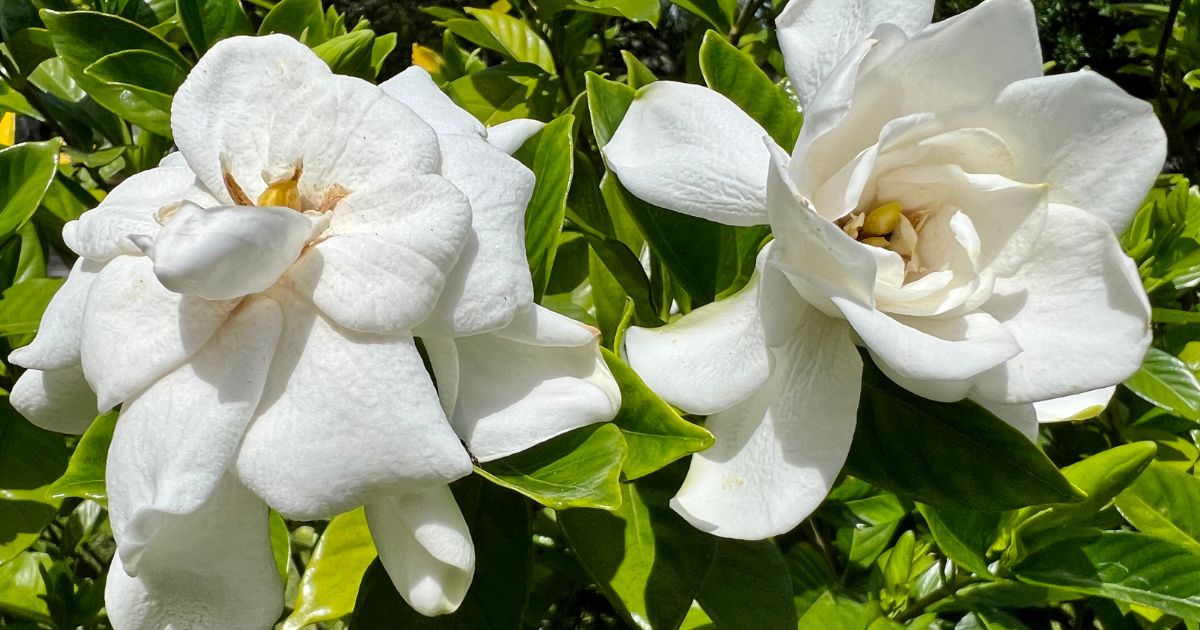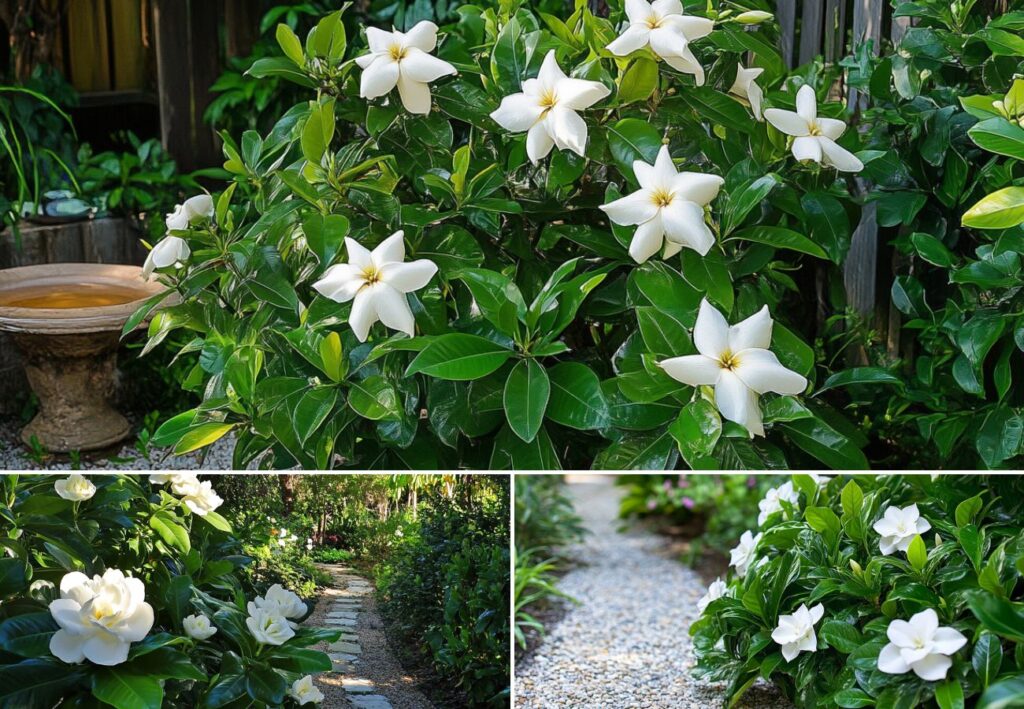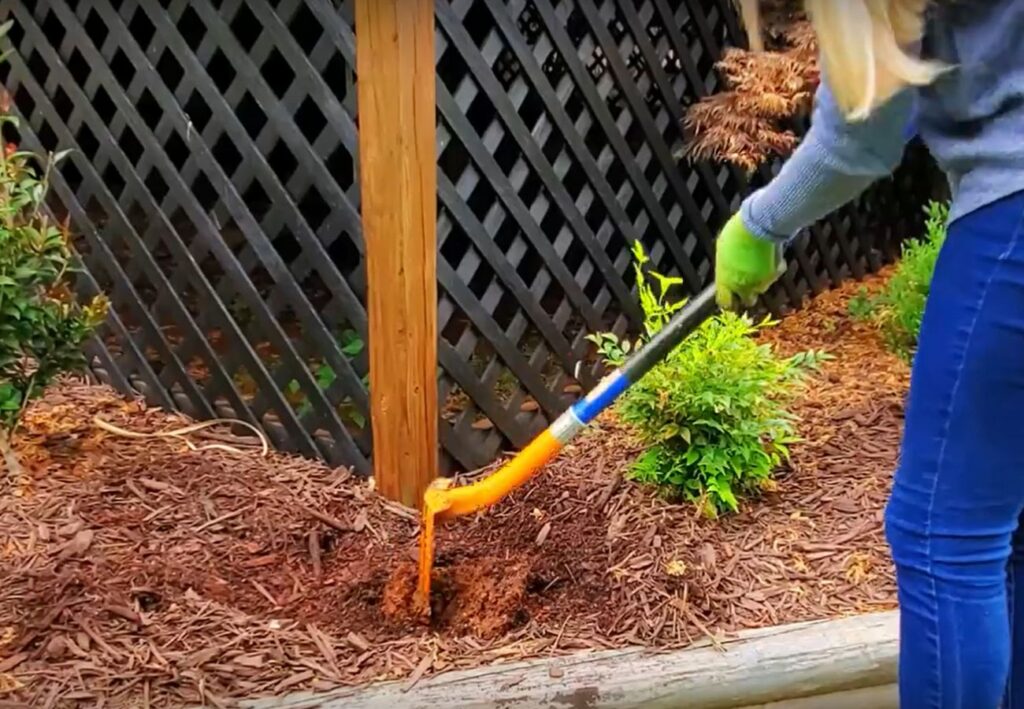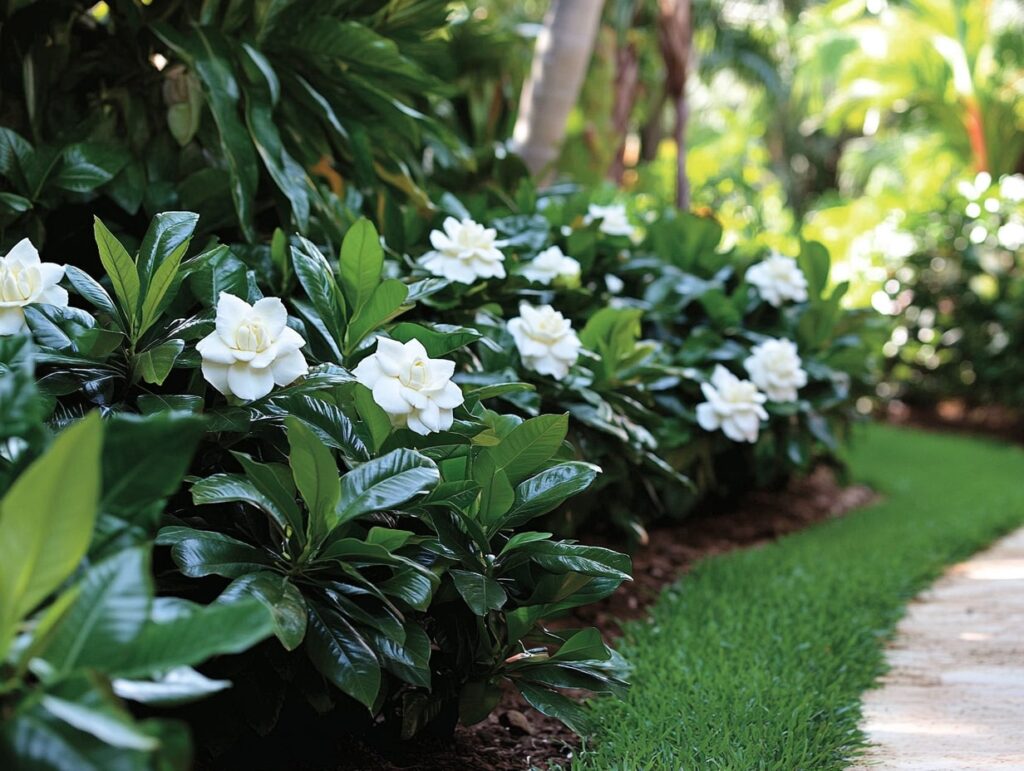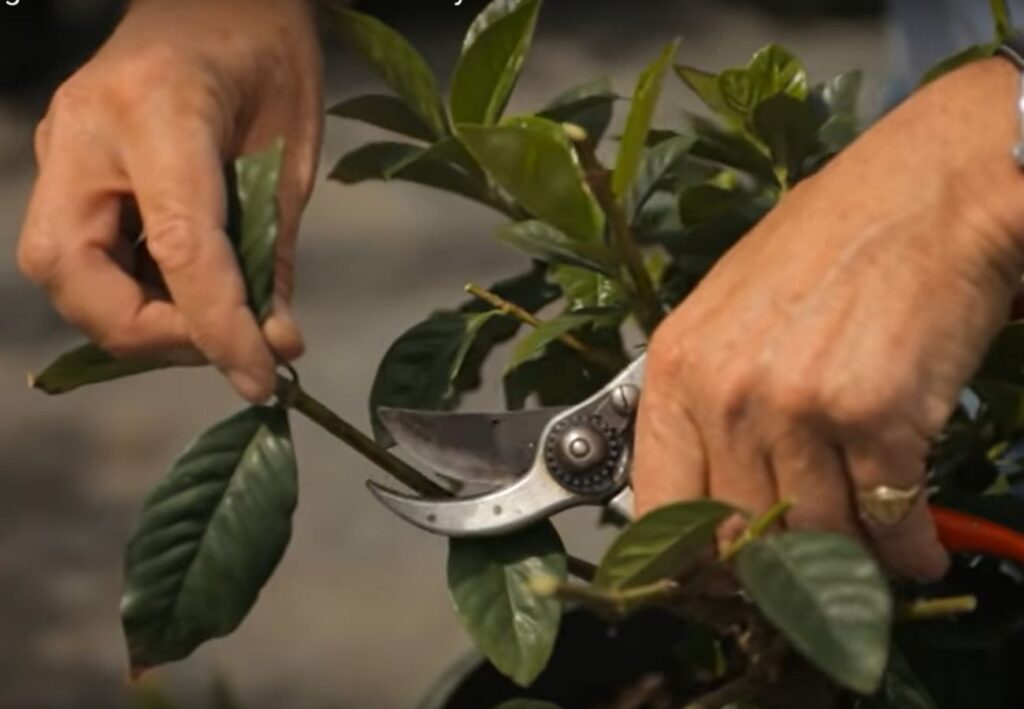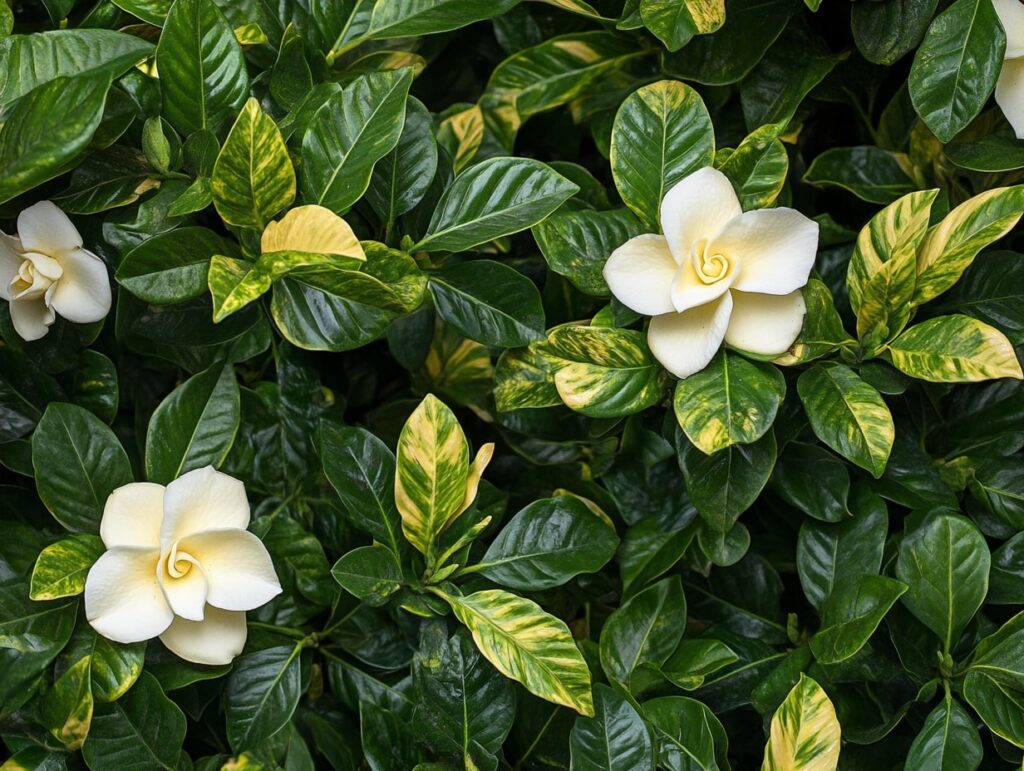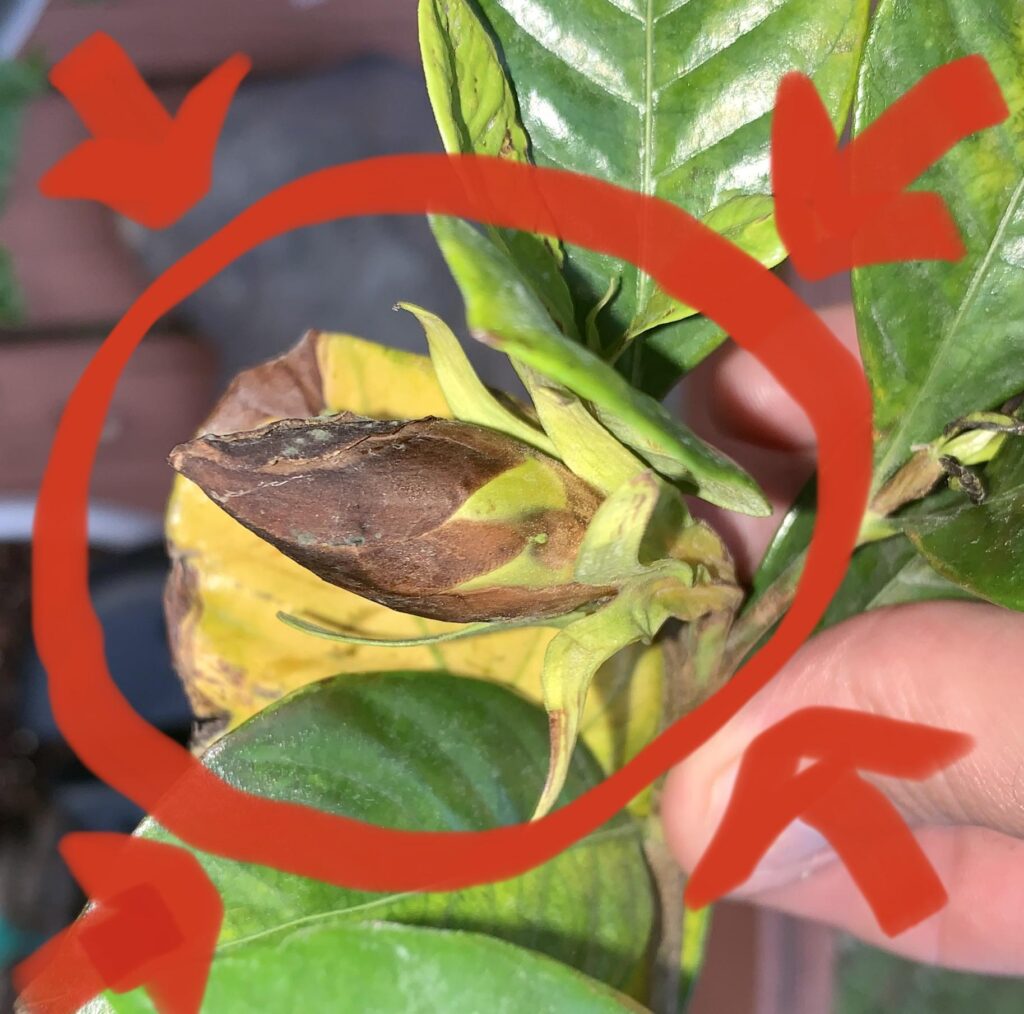Imagine stepping into your garden and inhaling the sweet, intoxicating scent of gardenias in full bloom. These beautiful plants can transform your garden into a fragrant paradise that delights the senses.
To successfully grow and maintain fragrant gardenias, you need to pay attention to their specific needs, such as sunlight, soil conditions, and watering habits.
Gardenias thrive in well-drained, acidic soil and need at least six hours of indirect sunlight each day. Proper watering is crucial, as these plants prefer consistently moist soil but can suffer if overwatered.
Providing them with the right environment and care will keep your gardenias healthy and blooming.
If you’re looking to add a touch of elegance and a burst of aroma to your garden, gardenias are the perfect choice. With some patience and the right techniques, you can enjoy these stunning flowers and their magnificent fragrance all season long.
Understanding Gardenias
Gardenias are beloved for their intoxicating fragrance and stunning appearance. Key considerations include the various species and their unique characteristics, as well as the cultural significance they hold in different societies.
Species and Varieties
There are numerous species and varieties of gardenias, each offering unique traits. Gardenia jasminoides is one of the most popular, known for its large, creamy white flowers. Other notable varieties include Gardenia thunbergia and Gardenia radicans.
When choosing a gardenia, consider its growth habit and size. Some are compact and ideal for containers, while others can form large shrubs. Common varieties include:
- Aimee Yoshioka: large blooms
- August Beauty: prolific flowering
- Radicans: low-growing ground cover
These varieties require different care techniques, making it important to select the right one for your garden conditions.
Cultural Significance
Gardenias carry deep cultural meanings across the world. In China, they symbolize purity and sweetness, often used in weddings and celebrations. In the Victorian era, gardenias represented secret love, commonly exchanged among lovers.
In the Southern United States, gardenias are a staple in gardens and bridal bouquets, valued for their elegance and fragrance. You might also find them featured in perfumes and essential oils due to their potent aroma.
Recognizing the cultural impact of gardenias can enhance your appreciation and handling of these beautiful plants.
Planting Your Gardenias
To ensure your gardenias thrive, consider the right location, soil type, and proper planting techniques. Each aspect influences how well your gardenias will grow and bloom.
Choosing the Right Location
Gardenias need a spot with partial shade where they can receive about 4-6 hours of sunlight each day. Morning sun and afternoon shade work best.
Avoid areas with strong winds to protect the delicate flowers. Ideal locations include the east side of your house or under the canopy of taller trees.
Check that your chosen spot has good drainage, as waterlogged soil can harm the roots. Proper air circulation around the plants helps prevent fungal diseases.
Soil Preparation
Gardenias perform best in acidic soil with a pH between 5.0 and 6.5. Before planting, test the soil acidity using a pH testing kit.
Amend the soil with organic matter such as peat moss or pine bark to improve its structure and nutrient content.
Add sulfur if necessary to lower the pH, and ensure the soil retains moisture without becoming soggy. Work the amendments into the top 12 inches of soil to create a hospitable environment for the roots.
Planting Techniques
Dig a hole twice as wide and as deep as the root ball of your gardenia plant.
Place the plant in the hole, ensuring the top of the root ball is slightly above ground level. This prevents water from pooling around the base.
Backfill the hole with the amended soil, pressing down gently to eliminate air pockets. Water the newly planted gardenia thoroughly and mulch around the base to retain moisture and suppress weeds.
Caring for Your Gardenias
Proper care involves consistent watering, careful fertilizing, and vigilant pest and disease management to keep your gardenias healthy and blooming.
Watering Essentials
Gardenias require consistent moisture. Water your plant deeply and regularly; the soil should remain evenly moist but not waterlogged. Use a soaker hose or drip irrigation to ensure uniform watering.
Check the soil’s moisture level by sticking your finger about 1 inch deep into the soil; water if it feels dry.
Gardenias prefer slightly acidic soil. Use rainwater or distilled water if your tap water is too alkaline, as it can affect the plant’s nutrient uptake.
Fertilizing for Healthy Growth
Proper fertilization promotes vigorous growth and abundant blooms. Feed your gardenias with a fertilizer specifically formulated for acid-loving plants, such as a 3-1-2 NPK ratio. Apply fertilizer every 4-6 weeks during the growing season, from spring through mid-summer.
Avoid over-fertilizing as it can lead to leaf burn and poor flower production. Ensure the soil is moist before applying fertilizer to prevent root damage.
Pest and Disease Management
Keep an eye out for pests like aphids, scale insects, and whiteflies. These pests can be controlled with insecticidal soap or neem oil. Spider mites are a common issue; mitigate them by increasing the humidity around your gardenias.
Diseases such as root rot and sooty mold are often due to poor drainage or excessive moisture. Ensure good air circulation around your plants and avoid overhead watering to reduce fungal issues.
If necessary, use a fungicide to control fungal diseases effectively. Always remove and dispose of any affected plant parts to prevent the spread of disease.
Pruning and Maintenance
To keep your gardenias lush and fragrant, regular pruning and diligent maintenance are essential. Pruning helps shape the plant and encourages healthy growth, while consistent maintenance ensures a thriving gardenia.
When and How to Prune
Prune your gardenias right after they finish blooming. This usually occurs in late spring or early summer. Pruning later in the year can remove buds that would bloom the following season.
First, remove dead or damaged branches with clean, sharp pruners. Cut them back to a healthy part of the branch or the base of the plant. Focus on thinning out overcrowded areas to allow better air circulation, which helps prevent disease.
Trim back any wayward or leggy growth to maintain the desired shape and size of the plant. Make your cuts just above a leaf node or bud to encourage bushier growth. Always disinfect your pruning tools before and after use to avoid spreading diseases.
Regular Maintenance Tips
Water your gardenias consistently, ensuring the soil stays moist but not waterlogged. They prefer slightly acidic soil, so consider using a fertilizer formulated for acid-loving plants. Apply fertilizer in the spring and mid-summer for optimal growth.
Mulching around the base of the plant helps retain moisture and suppress weeds. Use organic mulch, such as pine straw or shredded bark, and maintain a layer of about 2-3 inches.
Inspect your gardenias regularly for pests like aphids, spider mites, and whiteflies. Use insecticidal soap or neem oil as needed to keep infestations under control. Keep an eye out for yellowing leaves, which can indicate nutrient deficiencies or disease.
Remember to keep the area around your gardenias clean and free of fallen leaves or debris to minimize the risk of fungal infections.
Troubleshooting Common Issues
Gardenias can face issues like yellowing leaves and bud drop. Addressing these problems promptly helps keep your gardenias healthy and ensures they produce beautiful, fragrant flowers.
Dealing with Yellowing Leaves
Yellowing leaves on gardenias can be caused by several factors, including overwatering, poor drainage, or insufficient nutrients. Ensure your gardenia is planted in well-draining soil, and avoid watering too frequently. Use a balanced, acid-loving plant fertilizer to maintain nutrient levels.
Iron deficiency is another common cause of yellowing leaves. This can be corrected by using an iron supplement or chelated iron. Also, check the pH level of your soil. Gardenias prefer slightly acidic soil (pH 5.0-6.0). If necessary, amend the soil with sulfur or a soil acidifier.
Bud Drop and Flowering Problems
Bud drop and issues with flowering can be frustrating for gardenia growers. Temperature fluctuations are a leading cause of bud drop. Gardenias thrive in consistent temperatures between 60-75°F (15-24°C).
Avoid placing them in areas with drafts or sudden temperature changes.
Overwatering or underwatering can also cause bud drop. Make sure the soil is consistently moist but not soggy. Check the moisture level regularly and adjust your watering schedule as needed.
Lastly, insufficient light can prevent gardenias from flowering. Gardenias need bright, indirect light for optimal blooming. If indoor, place them near a window with filtered sunlight. If outdoor, ensure they are in a spot with morning sun and afternoon shade.
Cultivating gardenias in your garden requires attention to detail, from selecting the right location and preparing the soil to providing consistent care and maintenance.
With the proper techniques and a little patience, you can enjoy the lush foliage and intoxicating fragrance of gardenias throughout the season.
By understanding their needs and addressing common issues promptly, your gardenias will thrive, adding elegance and a delightful aroma to your outdoor space.
Embrace the beauty and charm of these stunning flowers, and let them transform your garden into a fragrant paradise.
